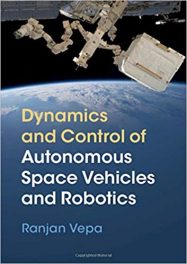Author: Elaine Louie
Publisher: Hyperion Books – 265 pages
Book Review by: Laxmi Chaandi
This book is a collection of recipes spanning 25 cuisines around the world contributed by some 90 chefs and cooks. Organized alphabetically by names of dishes, this is an easy-to-use cookbook. At the top of each recipe is the name of its contributor, typically a chef in a particular restaurant, along with a list of foods, ingredients and preparation directions, and how many people the dish would serve.
The title The Occasional Vegetarian means the book is intended for meat eaters who occasionally want to eat vegetarian or vegan food. Vegans do not eat seafood, eggs or dairy products like butter or cheese (made with cow’s milk) and sometimes not even honey. Typically, vegetarians eat all this but avoid meat and seafood.
There is no strict distinction of course between vegans and vegetarians. If you ask different people who call themselves vegetarian, some will tell you they do not eat eggs and seafood but others will tell you they eat one of these two types of food but not the other. Vegetarians do not eat meat and seafood for nutritional reasons but many, such as hundreds of millions of Hindus, the reason is religious.
For the guidance of readers, each recipe is marked if it is for vegans. But this is not always the case, so you need to read the recipe ingredients carefully. For example, the recipe on page for Braised Chinese Mushrooms with Baby Bok Choy is marked “vegan” but it contains “oyster sauce which has no oyster extract.” That puts doubt in a cautious vegan reader’s mind as to whether oysters was used and if it was not, why call it an oyster sauce. Some vegan friends of mine avoid biscuits and cookies with packaging that mentions “egg-less substitute” as an ingredient. What exactly is that, they question.
The author Elaine Louie writes the column The Temporary Vegetarian which appears in the Dining section of The New York Times and the Diner’s Journal, an online blog. She was awarded the James Beard Journalism Award in 1995. The Foreword for this book was written by Pete Wells, editor of the newspaper’s Dining section.
Many of the recipes for the large variety of dishes featured in this book come from countries in Asia and the Far East. But there are also foods that originate from Africa,
Middle East, Europe and South America. That is one of the chief virtues of this book: the large range of dishes presented in it, in terms of foods, ingredients – condiments and spices you probably have not come across – and different ways of preparing them. You can discover dishes you’ve never had before without having to expend the time, money and effort involved in travel to different countries.
One of the interesting recipes in this book is for Fragrant Mushroom Spring Rolls Wrapped in Lettuce Cups. The contributor of the recipe for this dish discovered it while traveling in Singapore. Is this a Chinese, Singaporean or Thai dish? It does not matter, but even without looking at a color photo of it, just looking at the ingredients and preparation directions makes my mouth water. That may be because I happen to love Oriental food.
But you don’t have to have a preference for any type of food or food originating from a a particular region or country. For example, reading the ingredients and cooking directions for the Hungarian Potato and Egg Casserole, I already have a desire to taste it.
If you’ve ever traveled and eaten food in different parts of the world, your taste buds have already got an education with exposure to food that ranges from bland to spicy hot. However to locals, spicy hot is “delicious” to their taste buds and bland tastes “good” to them. The point here is that you can modify the ingredients and cooking directions in these recipes to suit your own tastes and / or those of guests you invite to your home.
This is a good book for adding to your knowledge of and exposure to international foods. It enables you to experiment cooking and tasting dishes that originated from many different countries. It offers an adventurous way to broaden your culinary horizon and enrich your gastronomic experience. That I believe is what good eating is all about.






